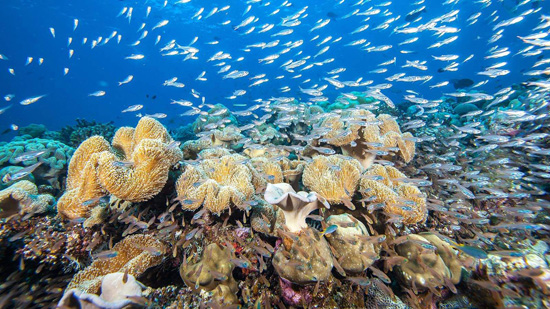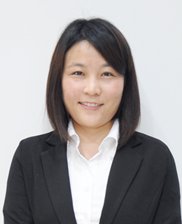读文章拓展托福高频词汇-Marine biology
Marine biology
Creatures called giant larvaceans help ferry food—and pollution—to the deeps.
(一种叫做巨型幼形虫的生物将食物还有污染搬到深海)
摘自The Economist September 22nd 2018
本文由新航道托福培训团队-杨少娟分享并翻译,我们列出了【】的托福高频词汇,方便考生查阅!
The deep sea is full of fantastical creatures. Gelatinous pink sea pigs shovel food with arms like tiny sea anemones. Delicate tripod fish stand on chopstick-like stilts. Barreleye fish have transparent heads that reveal all their internal workings. Giant larvaceans hold 【a well-deserved spot 】on this list of curiosities. Shaped like oversized sperm, with a head and wide tail, the faintly blue tunicates are just ten centimetres long. But their “houses”, ephemeral structures which the creatures build from a film-like mucus, can be up to a metre across.
(深海中充满着神奇生物。一种凝胶状粉色的海猪会用类似小海葵一样的手臂铲食物。精致的深海田鱼用像筷子似的“高跷”站立。太平洋桶眼鱼的脑袋是透明的,能清楚地看到(脑袋)内部情况。而巨型幼形虫在猎奇榜单上占着一个【实至名归的】位子。状如超大号精子-只有头部和宽宽的尾巴-这种微微发蓝的背囊动物只有10厘米长。但是它们的“房子”,也就是这种生物用膜状的粘液建造的持续时间很短的建筑,能达到一米。)
Larvaceans are a familiar sight to deep-ocean biologists. But, as Bruce Robison at the Monterey Bay Aquarium Research Institute (MBARI) told a conference in California earlier this month, it is only in the past few years that scientists have been able to study the animals in their native environment. Doing so has helped to answer the question of just why there is so much life on the floor of the deep ocean, where food was thought to be 【scarce】.
(对于深海生物学家来说,幼形虫还是很常见到的。不过,正如美国蒙特利湾水族馆研究所Bruce Robison在本月初加利福尼亚会议上所说的,直到最近几年科学家才能在它们原生环境中研究它们。这样的研究有助于解答下面这个问题—为什么深海海底(之前科学家一直认为食物【匮乏】)有那么多生命。)

A larvacean’s house comes in two parts. The inner house is made up of two 【symmetrical】 lobes and looks a bit like a 【translucent】 brain that hovers just above the animal. Around those lobes is a larger and less well-defined external house. Both act as filters, channelling nutrient-rich water towards the larvacean inside. Once they become clogged, roughly every 24 hours, the larvacean whisks itself out with a flick of its tail and builds a fresh dwelling. The 【abandoned】 houses collapse in upon themselves and sink to the sea floor.
(幼形虫的房子有两部分组成。内房是是一个【对称的】叶状物,有一点像个【透明的】大脑悬在它上方。在这脑叶周围包着更大的不那么好定义的“外房”。两个部分的房子都可用作过滤器—将富含养分的水导入到幼形虫体内。大约每24个小时过滤通道被堵塞,这些幼形虫就会用尾巴把自己弹出来重新再建一个新家。【被遗弃的】房子内部坍塌坏掉沉入海底。)
As they sink, these 【discarded】 dwellings take with them all the particles trapped in their filtration systems, much of which is dead organic matter. By shadowing the sinking structures with remotely operated submersibles called ROVs, Dr. Robison measured their rate of descent at around 800 metres per day. By contrast smaller, free-floating organic particles, known as “marine snow”, sink at a rate of just centimetres a day. Marine snow is the main food source for deep-ocean ecosystems. But because it sinks comparatively slowly, microbes in the water are able to digest much of the food along the way, consuming it before it reaches the ocean floor.
(在这些【被遗弃的】房子下沉的时候,会将房子过滤系统中留下的颗粒物也带到海底,而这些颗粒物很多都是死掉的有机物。在用远程遥控的叫做ROVs的潜水器跟踪这些下沉的房子时,Robison博士测量出它们下降速度大约每天800米。与之相比,更小的可自由漂浮的名为“海雪”的有机颗粒物,每天下沉速度大约只有几厘米。海雪时深海生态系统中主要的食物来源。但是因为它们下沉相对较慢,水中的微生物能够沿途将其大部分消化掉,在它们到达海底之前将其消耗完。
That finding has helped solve a【 long-standing 】mystery in marine biology. Ken Smith, one of Dr. Robison’s colleagues, studies the ecosystems at the bottom of Monterey Bay, more than 4,000 metres below the surface. The organisms living there seemed to be expending significantly more energy than the marine snow was providing. The difference, Dr. Robison believes, can be accounted for by discarded larvacean houses. He reckons they could account for a third of the energy available on the ocean floor. And what is true of Monterey Bay is probably true elsewhere, too. Larvaceans have been observed all around the Pacific and Atlantic oceans.
(这个发现帮助我们解决了一个海洋生物学中【长久以来的】谜团。Robison博士的一位同事Ken Smith研究了蒙特利湾距表面4000多米深的生态系统。那里的有机物消耗的能源似乎远远超过海雪提供的能量。Robinson博士认为这个差异是有被遗弃的幼形虫的房子造成的。他的看法是这些房子提供的能源可能占了海底能源的三分之一。在蒙特利湾发现的现象在其他地方也很有可能是存在的。科学家已经在观察太平洋以及大西洋的幼形虫情况。)
Larvacean houses may also help to explain why microscopic particles of plastic have been discovered in the ocean’s deepest depths. Plastic 【fragments】 should float, but if they become trapped inside the snot-like globs of discarded larvacean houses, they can be dragged down into the abyss.
(幼形虫的房子也可用来解释为什么在海洋最深处也能发现塑料微粒。塑料【碎片】应该是浮在海上的,但是如果它们被困在被丢弃的一团团鼻涕状房子中时,石油可能被拽入深渊的。)
Kakani Katija, another of Dr. Robison’s colleagues, has designed a laser scanner for the aquarium’s ROV. She has injected microplastics into the water around giant larvaceans and watched as they were sucked into the filters. The plastic ended up in the animal’s faeces and houses, both of which ferried them into the deep. At the conference this month, she described collecting sinkers from the deep ocean that were full of microplastics. What effect those plastics are having on the rest of the deep-sea world is, for now, unknown.
(另外一位Robison博士的同时Kakani Katija为海洋馆ROV设计出一个激光扫描仪。她将塑料颗粒注入周围含有巨型幼形虫的水域并且观测到它们通过过滤器被吸入到虫子体内。这些塑料最终出现在虫子粪便以及房子里面,而粪便和房子都会将塑料运载到深海。在本月的会议上,Kakani描述了如何从满是塑料颗粒的深海中搜集这些下沉物。这些塑料将对深海世界的其他地方有什么影响目前还未可知。)

上海新航道雅思 、托福、GRE主讲。上海外国语大学教育学硕士毕业,持有口译证书、教师资格证书。8年教学经验,针对不同程度、不同年龄段、不同需求的学生,提供其最合适的教学内容及方法,因材施教,授人以渔。课堂条理清晰,逻辑严谨,风格亲切自然,耐心细致。运用完整而成熟的授课体系帮助数千学子夯实英语基础,提升考试成绩。
博文笔记:
Evolutionary biology——Hard to swallow
Geology and tourism——Pillars of salt








